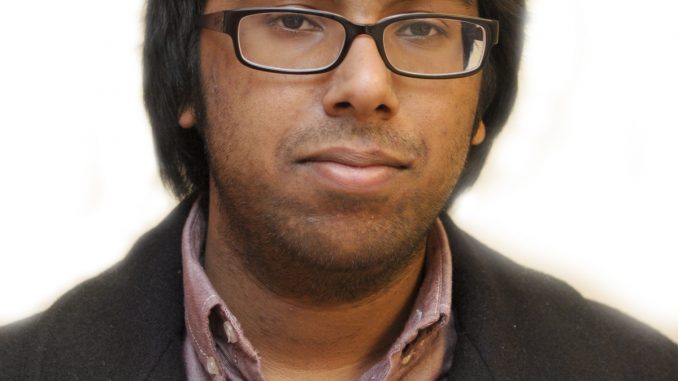
 I once had a professor who bemoaned the loss of beards in academia. It was part of the reason he’d gotten into the whole thing in the first place, he’d said, and yet everywhere he turned there were bare-faced professors, adjuncts and graduate students who looked positively cherubic. He was part of the last bastion that relished this minor eccentricity sprouting from their faces, but change had come.
I once had a professor who bemoaned the loss of beards in academia. It was part of the reason he’d gotten into the whole thing in the first place, he’d said, and yet everywhere he turned there were bare-faced professors, adjuncts and graduate students who looked positively cherubic. He was part of the last bastion that relished this minor eccentricity sprouting from their faces, but change had come.
When I learned of Temple’s plan to erect a “21st-Century library” in place of the Student Pavilion, I didn’t rejoice. Instead, as often happens with something you love that’s about to become derelict – like Chris’s Taco Stand, which I’m still reeling from – I felt the first swift pangs of a wistful melancholy. The announcement of a $144 million super-library was a death knell for the institution that has served us since 1966, and whose fate is still to be determined as it is gradually phased out.
Think of Paley Library: the stuffy, windowless upper floors, fluorescently-lit; the notably aged decor, done up in battered, traffic-cone orange, pale ochre, and a kind of diluted lime like a somber fruit cocktail from 1974; the cataloging system, which initially seems like a combination of quantum theory and Soviet bureaucracy. And yet there’s a persistent charm to the place. For those lovers of the “old book smell” – of which I am not – the experience of strolling among the stacks can be almost aphrodisiacal.
Paley was almost rooted in impracticality from its inception: It was modeled not on other libraries, but on “book warehouses,” almost as if it was a place merely for books and not people. Yet generations of students insisted on making it theirs, and now it’s ours. Against all odds, the mastodon was wrangled. But is it already extinct?
Craig Dykers, co-founder of Snøhetta, the architectural firm set to design the new library on North Broad Street, seems to think so. Suffering from a tremendous Internet-induced myopia, anything that isn’t immediately available online is, to him, of no real importance.
“A library has never been about books,” Dykers said at an event earlier this month.
I tremble before such wisdom.
Until last month, when it was reissued to widespread media acclaim, “Speedboat” by Renata Adler was only to be found in an original 1976 copy among the stacks of Paley Library. Much of Paley’s catalog has yet to be digitized and exists only in its hard copy. The experience of reading and handling a first edition of “Ulysses” by James Joyce – which Paley has, by the way – is radically different from perusing a haphazardly scanned file of the same book in the library’s database. A number of studies in the retaining of memory have corroborated this. Even an intermediate reader must beg to differ with Mr. Dykers’ philosophy.
What Paley offers stems from its perceived lack – it enables a kind of negative capability. Where else on campus can you find the same brand of solitude? The TECH Center sometimes feels like a garish computer carnival, with its persistent clack of keyboards and color-coded divisions. While it may have a profusion of outlets – God love them – it just doesn’t compare to the almost ascetic quietude of Paley. Many students’ greatest moments of concentration have been achieved in Paley Library, punching out papers in a marathon of writing or shoveling away weighty tomes, be it for class or for fun.
Temple’s grand undertaking of this proposed palatial human-connection-learning center seems to me to overcomplicate the idea of the library. There is something about Dykers’ attempt to redefine and reinvent the library that I find baffling, along with the proposal of some retail space inside the library. At its base level, a library is a repository of flat bundles of paper culled from a tree and, occasionally, you can find something interesting printed in them. It isn’t expressly about interaction. The beauty of Paley is in its stark simplicity. Besides, talking is usually discouraged in a library.
There are some positives, unless the proposal was entirely positive to you from the start. The new library is to be a “signature building,” in that it incorporates the neighborhood around it and will be more readily available for use to local residents as well as students.
So hang it all, Snøhetta, you can keep your retail opportunities and your natural light. It’s getting close to crunch time, and I have to finish these last 100 pages in the most WiFi-less corner of Paley. We still have this place for a little while. Cherish it.
Sunil Chopade can be reached at sunil.chopade@temple.edu.


Be the first to comment